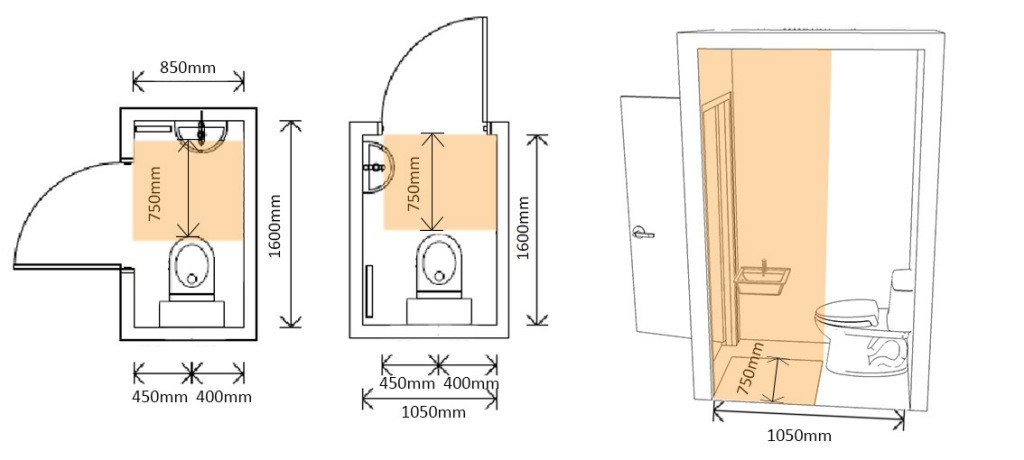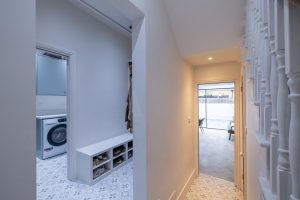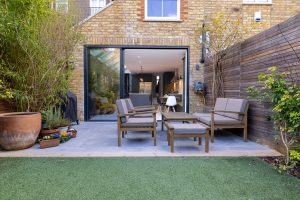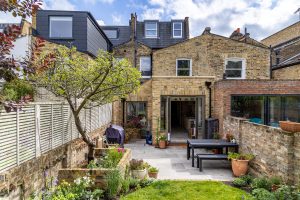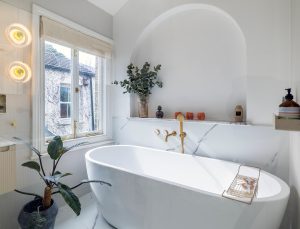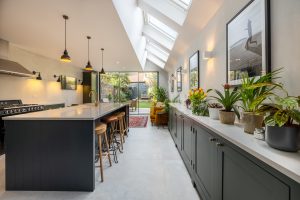When designing your extension, it is important to remember that just because it’s internal; it doesn’t mean you can do what you want. Local planning guidelines can influence a design, and our job is to help navigate the regulations to help you achieve a design that you love, that is safe and satisfies building regulations.
Here are some helpful tips to help you understand what building control is, and how they might affect your design.
What is Building Control?
Building Regulations set standards for the design and construction of buildings to ensure the safety and health for homeowners. They also include requirements to ensure that fuel and power is conserved and facilities are provided for people, including those with disabilities, to access and move around inside buildings.
Here are some of ways in which the building regulations can affect the way your project is designed –
The WC:
Adding a WC to the ground floor is very useful and can make great use of what would otherwise be dead space. It’s also a great selling point if you choose to sell your property and will add value to your home.
Depending on the existing layout of your property, the most logical place for this to be sited (most of the time) is under your stairs. Clients have often assumed we wouldn’t be able to fit a WC under their stairs and you would be surprised what we can do with a small space, although Building Regulation does require a WC to be a certain size.
There must be at least 750mm of space in front to allow access for the WC, and the room must be either 850mm or 900mm in width. Depending on the layout of the room, this can divided 450/450mm or 450/400mm.
Your basin must be positioned to avoid obstructing the access. Luckily, sinks come in all shapes and sizes these days and there are lots of practical sinks that are very narrow in depth. If you choose to go small on the room size, the door to the room will have to open outwards, unless you opt for a pocket door.
Lots of numbers can get confusing, so here’s a handy diagram to help illustrate the dimensions mentioned above.
Loft conversions are a great way to add space to your home and make use of space that probably isn’t used very often. In order to do this, we would usually have to design and build a new staircase so you can access your loft. Depending on your existing layout and your chosen design, this staircase would usually be constructed above the existing staircase which serves your first floor.
The design of this is subject to the Building Regulations and can affect the useable floor space available in your loft. While there is no mandatory width for a staircase, there is a minimum head height above the stairs and the pitch at which the staircase is able to rise at.
There must be a minimum height of 2.0m above flights of stairs and landings. This headroom clearance can be reduced for stairs serving a loft on the condition that the height above the centre of the stair is not less than 1900mm and not less than 1800mm at the lower end of the pitch.
Landings:
There must be a landing at the top and bottom of each flight of stairs. The landing width at the bottom of the staircase must be at least the width of the staircase and 400mm clear of any door swing. The width of the landing at the top of the staircase must not be less than the width of the staircase.
Rise and Going:
The staircase serving the loft is classified as a “Private Stair” and only have a maximum pitch of 42o providing that the going (length of step) is not less than 220mm and the rise (height of each individual step) is not more than 220mm.
There are instances where a proper staircase to access a loft is not feasible in which case an alternating tread staircase may be permitted for loft conversions providing it only serves one room, has a handrail on both sides regardless of width and has a non-slip surface.
These are just some of the most common ways in which Building Regulations can affect the design and layout of your project. Here at Build Team, our Design Team can advise you on your design and your Designer will make you aware of any building regulation restrictions that are applicable.


